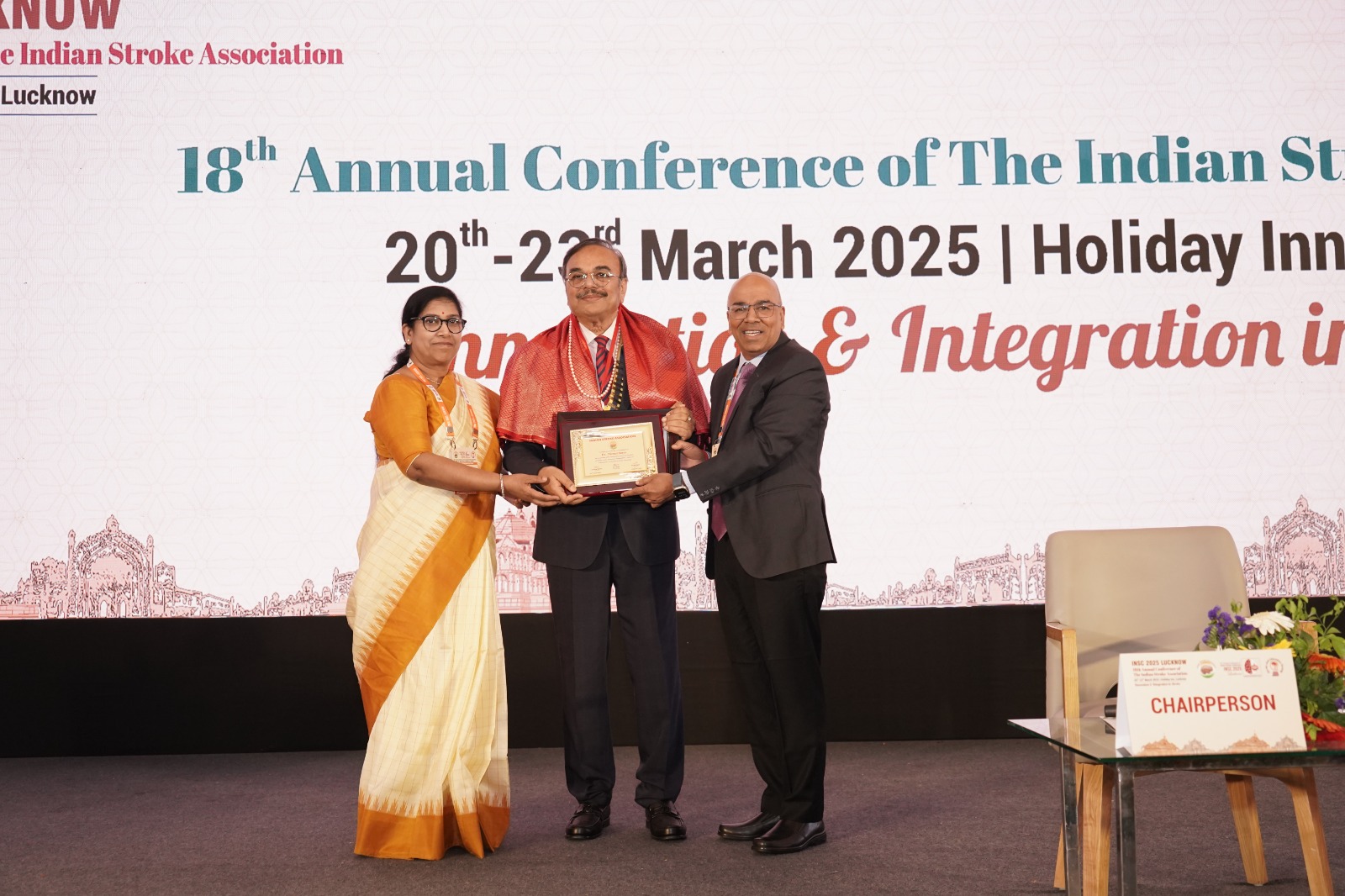
INSC 2025: Experts Call for Urgent Reforms in Stroke Rehabilitation and Care
The 18th Annual Conference of the Indian Stroke Association (INSC 2025) in Lucknow brought together leading medical experts, researchers, and healthcare professionals from around the world to discuss the growing burden of stroke in India. Under the theme "Innovation and Integration in Stroke," the conference highlighted the urgent need for advancements in stroke care, with a particular emphasis on rehabilitation and long-term management.
The 18th Annual Conference of the Indian Stroke Association (INSC 2025) in Lucknow brought together leading medical experts, researchers, and healthcare professionals from around the world to discuss the growing burden of stroke in India. Under the theme "Innovation and Integration in Stroke," the conference highlighted the urgent need for advancements in stroke care, with a particular emphasis on rehabilitation and long-term management.
During the event, Dr. Nirmal Surya, President of the Indian Stroke Association (ISA), provided a detailed overview of the current state of stroke care in India. He pointed out the alarmingly high incidence and mortality rates, emphasizing the significant gaps in awareness, timely intervention, and healthcare infrastructure. Dr. Surya stressed that stroke remains one of the leading causes of disability in India, and without adequate rehabilitation, many patients struggle to regain independence. He underlined the need for early intervention, which could greatly improve recovery outcomes and reduce long-term dependency on caregivers.
One of the major challenges discussed at the conference was the stark disparity in stroke rehabilitation services across the country. While stroke treatment has advanced in recent years, rehabilitation services remain largely concentrated in urban areas, leaving rural patients with limited access to specialized care. Of the 1,250 stroke rehabilitation centers in India, nearly 80% are located in metro and tier-1 cities, while rural areas account for only 20%. Many patients in villages and smaller towns must travel over 120 kilometers to access proper rehabilitation, creating a significant barrier to recovery. Regional variations further add to the challenge, with South India having the highest number of rehabilitation centers, followed by North, West, East, and Central India.
Dr. Surya emphasized that many rehabilitation centers still lack the multidisciplinary approach required for comprehensive stroke recovery. Only 30% of existing centers provide advanced care with neurologists, physiotherapists, occupational therapists, speech therapists, and cognitive rehabilitation specialists. Meanwhile, 50% of centers focus solely on physiotherapy and mobility training, and another 20% rely on home-based and telerehabilitation services. The lack of standardized care models and limited training opportunities for healthcare professionals further hamper efforts to improve rehabilitation outcomes.
Technology, however, is emerging as a powerful tool in bridging the gaps in stroke rehabilitation. Dr. Surya highlighted the importance of AI-enabled rehabilitation solutions developed under the ‘Make in India’ initiative. These systems use computer vision to track patient movements, analyze angles and velocity, detect errors, and provide real-time feedback to therapists. Additionally, telerehabilitation has gained prominence, allowing patients in remote areas to receive therapy through mobile apps and virtual consultations. The increasing adoption of digital rehabilitation platforms is expected to play a crucial role in making stroke care more accessible to underserved populations.
Looking ahead, the expansion of stroke rehabilitation services remains a top priority. Dr. Surya outlined a vision for the next five years, which includes the establishment of dedicated rehabilitation institutes and centers, the introduction of stroke rehab fellowships and accreditation programs, and the development of cost-effective rehabilitation equipment. He also highlighted the importance of conducting multicentric clinical trials to improve treatment protocols and exploring brain-computer interface technologies to enhance recovery.
Reflecting on past efforts, Dr. Surya recalled a successful initiative in 1988-1989 when ICU nurses were trained in stroke care, leading to a significant reduction in mortality rates. He also mentioned a global webinar on stroke awareness conducted during the COVID-19 pandemic, which attracted over 5,000 participants from 36 countries. These efforts underscore the importance of continuous education, awareness, and policy-level changes to improve stroke outcomes in India.
The discussions at INSC 2025 reinforced the urgent need for a nationwide strategy to enhance stroke care and rehabilitation. With the rising incidence of stroke cases, improving access to timely treatment and comprehensive rehabilitation programs is crucial in preventing long-term disability. Dr. Surya’s vision for a technology-driven and patient-centric stroke rehabilitation network offers hope for millions of stroke survivors, paving the way for a more inclusive and efficient healthcare system. The future of stroke care in India will depend on close collaboration between healthcare providers, policymakers, and technology innovators to ensure that quality rehabilitation services are accessible to all, regardless of geographical location.